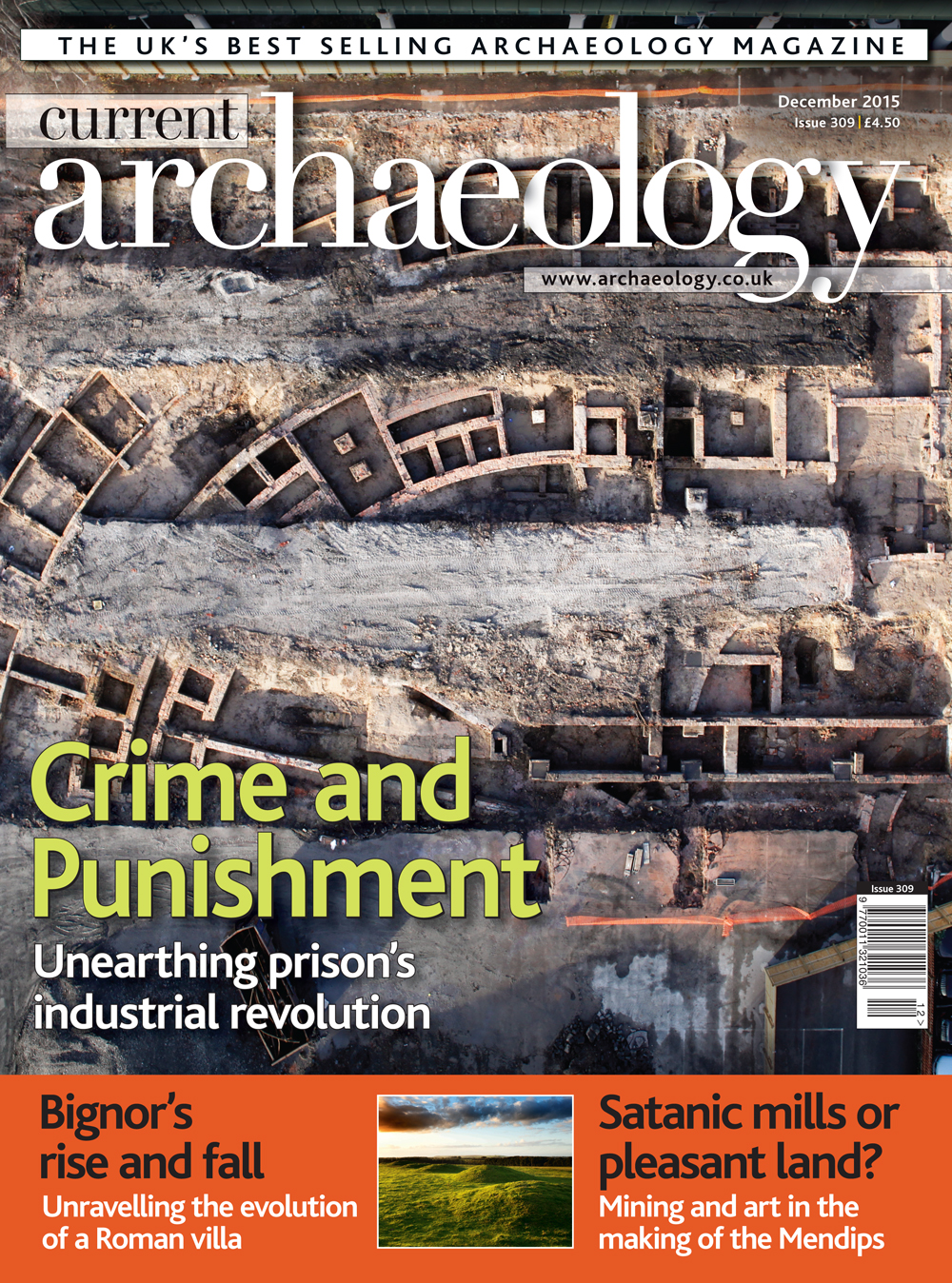Visiting some of Britain’s wilder landscapes today, it can be easy to overlook the mouldering machinery of past heavy industry, and the scars incised by mineral extraction. Such abstraction must have required greater mental agility in the 18th- and 19th-century Mendip Hills, though, when Romantic poets and artists seeking rural inspiration found that the Industrial Revolution had got there first. The landscape they celebrated was one carved out by both nature and industry.
The sumptuous art at Bignor Roman villa probably also owed a debt to exploiting the landscape, although in this case it came via profits creamed off the estate’s farming surpluses. Over 200 years since this remarkable residence was discovered, many mysteries remain, including who raised it to the peak of its opulence. One thing is certain‚ the owner’s investment left the villa amongst the grandest in Roman Britain.
Excavations have recently unearthed one of the largest Bronze Age roundhouses yet found in Ireland. But rather than serving as a vehicle to showcase individual riches, the local penchant for building big is viewed as a by-product of the region’s bountiful soils.
Decidedly more cramped lodgings awaited those incarcerated in Salford’s New Bailey prison. These inmates were the lucky ones, though, as the institution was the product of a pioneering mission to promote rehabilitation over retribution. But how did the prison’s reforming zeal fare as the local population skyrocketed?
Matt Symonds
IN THIS ISSUE:/n
FEATURES/n
MENDIP CONTRASTS/n
Industry and nature side by side
Ancient and modern collide in the landscape around Cheddar Gorge, inspiringRomantic writers and archaeologists alike. We explore its diverse features.
BIGNOR ROMAN VILLA/n
Unlocking the site’s secrets
Over two centuries after its discovery in 1811, Bignor’s Roman buildings and spectacular mosaics continue to intrigue. But what can we say about the people who lived there?
AT HOME IN THE BRONZE AGE/n
Building big in Skilganaban
Excavations in Co. Antrim have uncovered a wealth of Bronze Age remains, includingone of the largest roundhouses of the period yet excavated in the whole of Ireland.
NEW BAILEY, SALFORD/n
Prison’s industrial revolution
The remains of what was once England’s largest prison are being brought to lightonce more, illuminating the rise and fall of a revolutionary institution, built alongradically progressive lines.
PUSHING BACK BOUNDARIES/n
Iron Age open settlements in Cornwall
Geophysical survey on Cornwall’s north coast has revealed two major Iron Age settlements,but with none of the monumental defences traditionally associated with sites of this size.
NEWS/n
New Neolithic causewayed enclosure foundat Thame; Henry V’s Holigost rediscovered?;Britain’s Bronze Age mummies; Food for thought at Durrington Walls; Picture puzzleon the Black Isle; York’s Roman ditch under rugby pitch; Bronze Age ‘bag handle’ atPetersfield Heath; Reflecting Linwood’s Roman past; New British Museum Director
REGULARS/n
Reviews
First Light; Objects and Identities;The Art, Literature and MaterialCulture of the Medieval Age
Museum
The Crime Museum uncovered
Sherds
Chris Catling’s irreverent take on heritage issues
Odd Socs
The Letter Box Study Group

